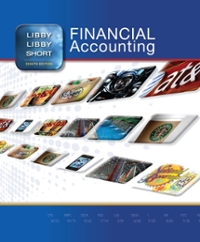Answered step by step
Verified Expert Solution
Question
1 Approved Answer
uiz 1 1. The maximin rule disregards the possible bad outcomes of the decision. Select the correct response: True False 2. A firm has a
uiz 1 1. The maximin rule disregards the possible bad outcomes of the decision. Select the correct response: True False 2. A firm has a risk seeking attitude if its marginal utility is diminishing. Select the correct response: True False 3. The best measure of riskiness is the expected value. Select the correct response: True False 4. The coefficient of variation measures the number of occurrences in a probability distribution. Select the correct response: True False 5. According to the expected utility theory, firms derive extra profit when they earn more utilities. Select the correct response: True False 6. The variance is usually larger than the mean. Select the correct response: True False 7. If the expected mean of two (2) decisions are the same but the variance is not, the one (1) with the higher variance is considered as the riskier decision. Select the correct response: True False Previous Continue 8. If a firm uses the equal probability criterion, the firm would choose the option that has the highest average payoff. Select the correct response: True False 9. States of nature can be altered by the firm. Select the correct response: True False 10. Most firms are risk averse. Select the correct response: True False Quiz 2: 1. Which of these is allowed under the Philippine Competitive Act? Select the correct response: A. Bid rigging B. Market dominance C. Output limitation D. Price fixing 2. What are the two (2) conditions for social economic efficiency? Select the correct response: A. Productive efficiency and allocative efficiency B. Productive efficiency and operations efficiency C. Market efficiency and allocative efficiency D. Operations efficiency and market efficiency 3. Which of the following is NOT an example of information that consumers will usually need? Select the correct response: A. Prices B. Production time C. Product quality D.Risks when consuming products 4. Which of these is a common resource? Select the correct response: A. Fish in the ocean B. Food in the supermarket C. Tollways D. Traffic lights 5. Who shoulders the deadweight loss? Select the correct response: A. Government B. Buyers and sellers C. Buyers D. Sellers 6. Which of the following pricing guidelines would result to social efficiency? Select the correct response: A. Adding a mark up to the cost of production B. Setting price where MR = MC C. Asking buyers for their preferred price D. Setting price where MC meets demand 7. Which of the following is an example of a rival good? Select the correct response: A. Cable TV B. Internet C. Clothing D. Highways 8. Which of these following is a positive externality? Select the correct response: A. Noise B. Taxes C. Research of new technology D. Automobile exhaust 9. Which of the following can be used to prevent monopolies? Select the correct response: A. Taxes B. Antitrust policies C. Environmental laws D. Property rights 10. Which of the following was the law established to ensure the balance between socio-economic development and environmental protection? Select the correct response: A. PD 1586 B. RA 9275 C. RA 9003 D. RA 6969 11. Which of these is NOT a government agency involved in the implementation of the Consumer Protection Act? Select the correct response: A. Department of Education B. Department of Agriculture C. Department of Health D. Department of Foreign Affairs 12. Which of these is a tool that the government can use to give information about a firm's products? Select the correct response: A. Skill certifications B. Pricing C. Brand names D. Quotas 13. Which of these describes public goods? Select the correct response: A. Non-rival and exclusionary B. Non-rival and non-exclusionary C. Rival and non-exclusionary D. Rival and exclusionary 14. What are the two (2) prohibited practices for dominant firms? Select the correct response: A. Product bundling and auctioning B. Auctioning and predatory pricing C. Predatory pricing and limiting production D. Product bundling and limiting production 15. Which of the following is an example of a non-exclusionary good? Select the correct response: A. Restaurant meal B. Plane tickets C. Clean air D. Gym membership
Step by Step Solution
There are 3 Steps involved in it
Step: 1

Get Instant Access to Expert-Tailored Solutions
See step-by-step solutions with expert insights and AI powered tools for academic success
Step: 2

Step: 3

Ace Your Homework with AI
Get the answers you need in no time with our AI-driven, step-by-step assistance
Get Started


